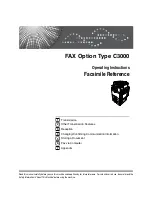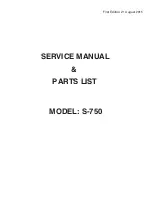
positions. The 12 and 6 o’clock positions are the UP and DOWN keys and also control volume up and down during a
call. The 3 and 9 o’clock positions are the RIGHT and LEFT arrow keys. The 3 o’clock position is often used as
“Yes” key during programming.
Below these four buttons is a row of the three round buttons: The left one is the DIRECT 1 button, the middle one is
the DIRECT 2 button, and the right one is the DIRECT 3 button.
Below the row of these three buttons is the keypad laid out in the conventional telephone arrangement with a “nib”
on the 5 button. To the right of the telephone keypad are four round buttons in a vertical column: The top one is the
PAUSE button. Below is the RINGER button. The third one is the LOCATOR button. The LOCATOR button is also
the INTERCOM button. The fourth is the MUTE button.
Below the keypad, there are three round buttons: The left one is the REDIAL button. The middle one is the FLASH
button. The FLASH button is also the CALL WAIT button. The right one is the HOLD button.
To the right of these buttons, an oval button is the DIGITAL SPEAKERPHONE button, with an indicator light to the
upper left.
The base unit microphone is located at the bottom of the base unit between the FLASH/CALL WAIT button and the
HOLD button.
Charger unit
On the back edge of the charger is the AC adaptor already connected. The top of the charger has a large hole in the
center and slants down toward the front.
The hole is the cordless handset’s charging cradle which is about 2.4 inch wide and 2 inch deep. The two plastic
ridges on the sides are the charge contacts for the cordless handset.
The cordless handset stands upright in the cradle with the buttons facing the front. The unit beeps when the cordless
handset is set properly in the cradle for charging. Just below the cradle is the CHARGE indicator light.
PQQX13383ZA-BM September 27, 2002
Содержание KX-TG2584S
Страница 4: ......






















